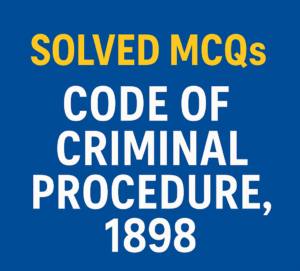Do you want to maximize your productivity and reduce stress at work? It’s time to revolutionize your workspace with the powerful ‘5S’ method.
Studies have shown that a clean and organized environment can significantly boost focus and efficiency, leading to greater success in your professional endeavors. But how do you achieve this level of organization? Enter the ‘5S’ method—a proven approach derived from Japanese organizational principles.
What is the 5S method of workspace cleaning?
The 5S method, much like Kanban and Kaizen, originated in Japan, where it was initially developed for organizational purposes in factories. Its effectiveness was quickly recognized and adopted beyond Toyota and other manufacturers, extending its influence to various industries. This method is based on five fundamental principles represented by the Japanese words seiri, seiton, seisō, seiketsu, and shitsuke, which have been translated into English as sort, set in order, shine, standardize, and sustain. Additionally, safety is sometimes included as a sixth “S,” reflecting its importance in factory environments where this system is commonly applied.
The versatility of the 5S technique extends far beyond factory settings and finds practical applications in diverse environments such as healthcare facilities, construction sites, and classrooms. However, its adaptability allows for customized implementation, making it equally effective for optimizing individual workspaces like your desk. Whether you’re organizing a large-scale operation or simply tidying up your personal workspace, the flexible nature of the 5S system ensures it can be tailored to meet your specific needs and requirements.
How does 5S work?
The five pillars of the technique offer a structured approach to organization and cleaning, aimed at reducing waste and enhancing productivity. Rather than viewing the five steps as a linear progression, it’s helpful to conceptualize them as a continuous cycle that you revisit regularly. After completing the fifth step, you loop back to the first, ensuring ongoing maintenance of your workspace’s efficiency.
While sorting typically serves as the initial focus, you have the flexibility to engage with any of the steps at any given time, depending on your immediate needs. This adaptable approach allows you to address specific challenges as they arise and seamlessly navigate through the cycle. Here’s a breakdown of what each step entails:
- Sort: Get rid of anything that isn’t necessary in the workspace. If it’s not needed for what you’re doing, put it away. Utilize drawers, storage bins, or under-desk organizers to keep the things that you don’t immediately need out of your sight. When possible, keep the storage bins opaque so you aren’t distracted by the contents. This set of two bins with rolling doors is perfect, as is this clip-on drawer system that hides unwanted items under your desk. The sorting period is also when you should throw away trash or anything completely useless.
- Shine: Start by decluttering your workspace and removing anything unnecessary or unrelated to your immediate tasks. Utilize storage solutions like drawers and bins to keep essential items within reach while minimizing visual distractions.
- Set in order: Organize your workspace efficiently by assigning designated spaces for different categories of items. Label bins and drawers to streamline access and ensure everything has its place for easy retrieval.
- Standardize: Establish protocols and routines for maintaining your organized workspace. Incorporate regular ‘5S’ maintenance into your schedule to prevent clutter from accumulating and ensure long-term productivity. It’s essential to allocate dedicated time for these tasks as part of your routine to-do list. For example, if you follow the 1-3-5 method of task prioritization, consider including 5S maintenance as one of your five smaller tasks for the day. To ensure consistency, it’s beneficial to schedule this maintenance session at least once a week, ideally using timeboxing techniques to block out dedicated time on your calendar. By proactively planning for 5S maintenance, you prioritize the ongoing organization and cleanliness of your workspace, setting yourself up for long-term success.
- Sustain: This step is all about keeping with it. Commit to upholding the standards set forth by the ‘5S’ method. Consistency is key to sustaining an organized workspace and reaping the benefits of increased productivity over time. The more you do it, the more of a habit it will become and the more efficient your workspace will be.
When engaging in sorting, it’s essential to remember that the objective extends beyond creating physical space. The primary goals include minimizing distractions and streamlining accessibility to items, thereby reducing the time spent searching for necessities. As you shine your workspace, prioritize not only cleanliness and safety but also cultivating an environment that is conducive to productivity. A pleasant and organized workspace can significantly enhance focus and efficiency.
Setting items in their designated places is crucial for optimizing workflow and minimizing time wastage. By ensuring that tools and materials are readily available when needed and stored in predictable locations, you can streamline your work processes and minimize disruptions.
Standardizing and sustaining the 5S procedure are vital for long-term success. Consistently following the established protocols and routines will not only ensure continued organization but also lead to increased efficiency over time. Ultimately, the goal is to create a workspace that supports your productivity and reduces the time invested in maintenance tasks.
Read Also:
- 12 Pieces of Advice for Life’s Most Difficult Challenge: Love Your Enemy
- Video Games That Changed the Industry Forever
- The Mushroom Revolution That’s Bringing Change
📍 SEO & Content Strategist | Expert in Current Affairs, History, Geography & Education Blogs | Digital Marketing Specialist
Muhammad Talha Mehmood is a seasoned digital marketing specialist, SEO expert, and content strategist with over six years of experience in creating high-impact, research-driven content. As the driving force behind Globaleak.com, he delivers in-depth articles on current affairs, history, geography, and education, helping readers stay informed with accurate, well-researched insights.
🔹 Expertise & Achievements:
✔ SEO & Content Strategy: Specializes in creating authoritative, high-ranking content that aligns with Google’s EEAT guidelines.
✔ Research & Analysis: Covers historical events, geopolitical trends, and educational topics with in-depth research and expert insights.
✔ Proven Track Record: Has successfully worked with global clients, delivering content that enhances brand trust, audience engagement, and search rankings.
✔ Academic Excellence: Holds an MBA in Marketing from IBA, University of the Punjab, and a B.Com (Hons) from Hailey College of Commerce.
✔ Industry Experience: Started his career with Packages Limited, trained under PITB’s E-Rozgar Program, and later became a Team Leader & Trainer at Emenac Group of Companies.
🚀 Passionate about creating impactful content, Muhammad Talha ensures every article is insightful, engaging, and value-driven.
📧 Email: talhamehmood34@gmail.com
🔗 LinkedIn: linkedin.com/in/talhamehmood-34









